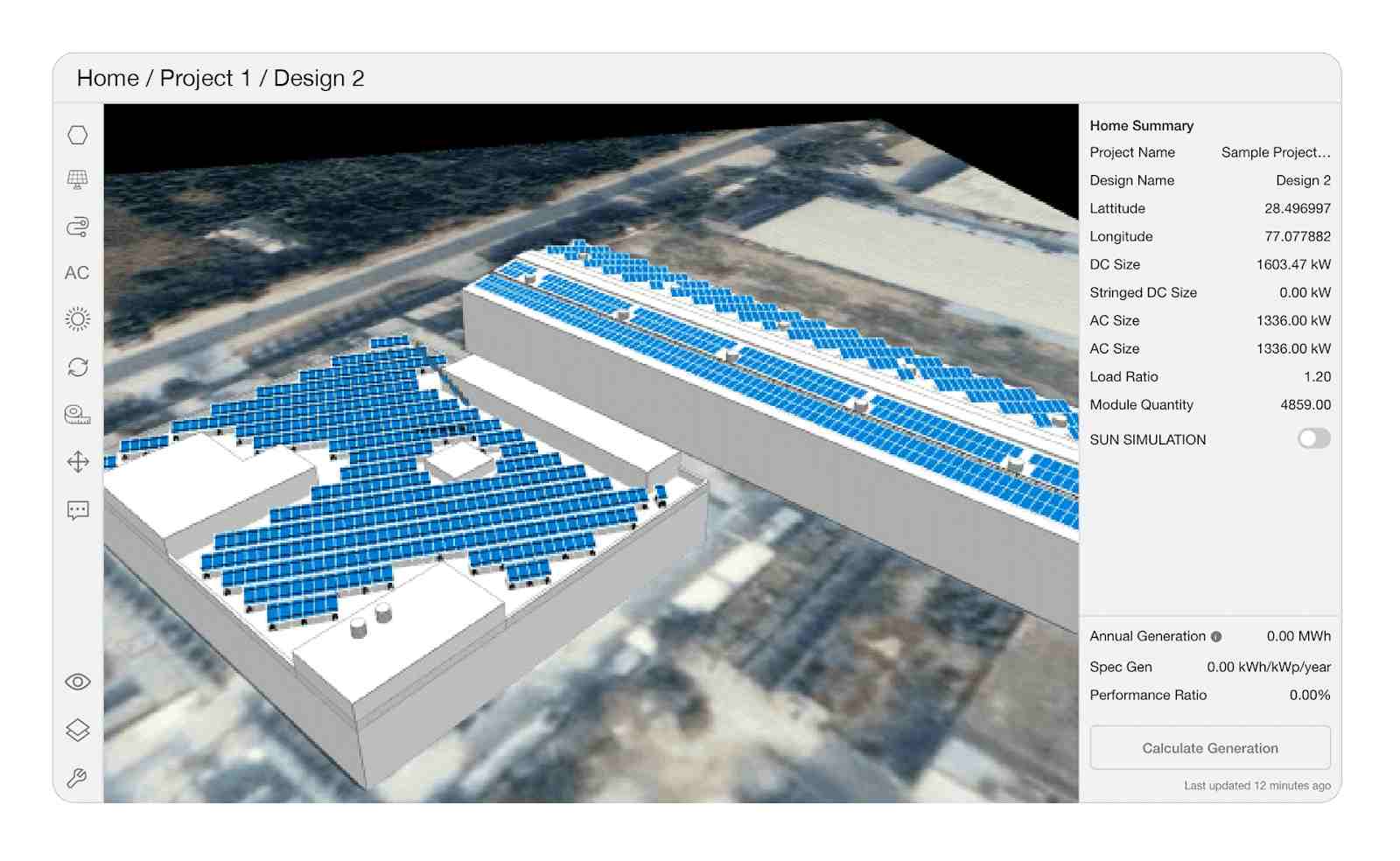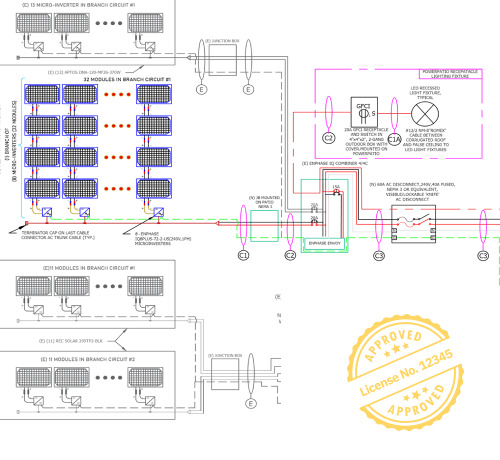
The solar industry is entering a new phase and the projects are becoming more complex and customer expectations are rising. Every proposal must be accurate and fast and visually compelling. Every design mistake now costs more time and more money than ever.
The right tools can transform the way EPCs and installers work. Software-driven design is becoming the heart of the entire project cycle. It shapes sales performance through design accuracy and determines the success of installations through better planning and documentation.
In 2026, the most effective solar design software will support advanced 3D modelling and AI automation and hybrid and storage systems and seamless proposal workflows and compliance documentation and cloud collaboration and analytics-driven lifecycle modelling. These capabilities help EPCs deliver faster and more accurate systems and higher margins.
Let’s learn more from this blog.
Solar demand is rising globally as more homeowners and businesses seek independence from rising energy prices and unstable power grids. Market reports on LinkedIn show continued spending growth in software-driven engineering and project optimisation because accuracy now directly influences profitability.
Project complexity is increasing. Solar installations now include bifacial modules and single-axis trackers and microgrids and fully integrated solar and storage systems. These solutions require efficient simulation and spatial analysis. The days when a designer could rely on spreadsheets or flat drawings are ending.
Customers have also become more informed. Investors and homeowners expect detailed visual representations and instant quotes and transparent performance guarantees. Faster turnaround is no longer optional. Visual clarity and data-driven modelling influence every buying decision.
Many tools still offer features that were suitable for 2020. Choosing software that cannot scale to the demands of 2026 means risking redesigns and delays. Every EPC wants to avoid tools that become outdated before the project pipeline matures.
The future belongs to platforms that evolve to match the pace of innovation. Flexibility and speed and accuracy will shape the winners of the solar decade.

Accurate 3D modelling represents the most critical step in modern project design. Simple 2D layouts cannot show roof pitch or shading or terrain elevation or structural obstructions. A realistic simulation environment creates precise solar layouts and reduces errors well before installation.
True 3D solar design software accuracy supports shading analysis and module spacing and tilt adjustments. These tools also allow granular yield predictions and performance estimates. Every design becomes more reliable and installation teams avoid costly site corrections.
When users present highly detailed 3D visualisations with real shading maps and structural representations, customers feel confident about moving forward. It builds trust and leads to faster project approvals.
Reliable 3D modelling should include LiDAR and high-resolution satellite layers and digital surface representation. It should also support imported drawings and BIM files. This allows full validation of architectural and engineering constraints.
Better design accuracy reduces labour time. It improves material planning and prevents unexpected on-site adjustments. This advantage becomes greater as project sizes scale.

AI-driven design automation is becoming essential. Manual placement of panels and stringing calculations consumes hours. AI can complete layout and inverter pairing and shading optimisation in minutes. This allows teams to manage more projects without sacrificing accuracy.
Volume-driven business models depend on speed. Growing competition and shrinking margins push EPCs to complete proposals and engineering deliverables faster and with fewer staff hours. Solar design software AI automation answers this demand by reducing design time and increasing throughput.
AI-based optimisation also improves performance accuracy. It selects the most productive orientation and spacing based on environmental and structural conditions. It increases predicted energy yield and enhances financial returns.
Time savings become visible when comparing a mediocre workflow to an automated one. Lengthy tasks can now be finished in a few minutes. This advantage influences sales conversion and profitability at every scale.
.jpg)
Solar adoption continues to shift toward hybrid and storage based installations. Residential customers want energy independence and resilience against grid failures. Commercial and industrial facilities seek peak demand savings. Utility-scale developers work on grid-forming storage and flexible hybrid architecture.
The new generation of hybrid solar design software storage integration capabilities allows modelling of DC and AC coupling and battery behaviour and dispatch simulation. It supports energy flow representation and allows project teams to compare multiple scenarios based on economics and performance.
This capability strengthens proposal clarity. EPCs can present a complete view of solar plus storage system impact without relying on external modelling spreadsheets. Customers immediately see the value difference between solar alone and solar with storage.
Future ready software must include a full storage component library and lifetime performance modelling and sizing recommendations. This level of detail drives stronger ROI justification and reduces uncertainty.
.png)
.jpg)
Solar design cannot stand alone anymore. The best workflow now requires a single environment where design transitions directly into proposals and permitting and installation planning. Every handoff stage can introduce errors. A connected process delivers consistency from start to finish.
Solar design to proposal software generates quotes and BOMs and visual proposals from the same dataset. This improves turnaround and shows customers clear financial comparisons and payback estimates. Faster response means more closed deals.
Sales teams need tools that deliver brand-ready output. Professional presentation helps build trust and supports higher conversion rates. Visual clarity and financial transparency make decisions easier.
A fully integrated workflow reduces repetitive tasks. It becomes easier to move from planning to execution and the project pipeline movement becomes smoother.

Permitting delays remain one of the biggest sources of lost profit for installers. Document preparation consumes time and requires specialised knowledge. Mistakes lead to rejections and repeated site visits and stalled installations.
Automatic permit solar design software generates compliant documentation from the same project model used for proposals. This includes single-line diagrams and structural layouts and equipment schedules and code checks. It removes manual drafting and reduces errors.
Automation lowers risk and accelerates installation approvals. EPCs avoid common bottlenecks and maintain reliable timelines. Less time on paperwork means more time on revenue generation.
Tools that offer pre-configured templates and export to DWG or PDF and support local standards deliver strong value. These capabilities are critical in competitive markets.
The solar industry relies on distributed teams across design and sales and field engineering. Remote collaboration has become standard. Cloud-based tools allow all team members to access the same solar project without delays.
Cloud solar design software collaboration provides version control and real-time updates. Team members avoid file transfers and outdated designs. Workflows move faster and projects reach installation sooner.
Mobile access is becoming essential. Field teams can capture site data directly into the system. Sales teams can work with clients during meetings. Designers can adjust critical project details without waiting.
The best platforms support role-based access and offline editing and automatic backup. This creates resilience and ensures that no progress is lost even when conditions change.

Next-generation design tools extend beyond initial layout. They include performance forecasting with lifetime yield curves and degradation profiles and financial modelling. Owners expect a clear visual representation of asset value across the project lifespan.
Solar design software analytics lifecycle modelling enables teams to simulate performance and verify expected ROI and guarantee long-term output. It enhances confidence and reduces risk concerns.
Digital twin capabilities create a virtual representation of the system. This supports optimisation through the full lifecycle. As maintenance needs evolve the digital twin represents real behaviour and helps extend asset life.
Software that includes analytics modules and flexible integration with monitoring systems supports stronger value guarantees. This creates advantages in competitive sales.
Every EPC has different scale requirements. Small installers often begin with 3D and AI design and proposal generation. Mid-sized companies benefit from hybrid and storage support and collaboration tools. Larger EPCs require analytics and documentation automation and advanced engineering capacity.
A practical roadmap begins by adopting features that directly improve speed and accuracy. Gradually add storage modelling and lifecycle tools to support future growth. Selecting a platform that can evolve prevents the need for replacement and retraining later.
The strongest choice is software aligned with industry advances and ready for continuous expansion.
.png)
Q1. Do I need all seven features for residential installations
Ans: Most residential projects benefit from 3D accuracy and AI layout and integrated proposal workflows. Other features become essential as project size grows or when storage is required.
Q2. What is the cost difference for software that includes full advanced feature sets
Ans: Premium platforms cost more upfront but generate higher returns through time savings and accuracy and faster sales conversion.
Q3. Will digital twin analytics matter for smaller teams
Ans: Digital twin tools help improve performance guarantees and reduce maintenance uncertainty. Smaller EPCs gain a stronger competitive advantage.
Q4. How often do solar design platforms update
Ans: Modern software evolves frequently to meet code revisions and equipment advancements and changing market expectations.
Q5. Is cloud access necessary for design teams
Ans: Cloud collaboration offers speed and accuracy for teams that work across locations and prevents mistakes caused by outdated files.
Solar is changing fast. To stay competitive in 2026, EPCs need solar design software that offers advanced 3D modeling, AI optimization, hybrid and storage integration, proposal automation, permit-ready documentation, cloud collaboration, and full lifecycle analytics. Companies that embrace these capabilities will build faster workflows with stronger accuracy and better project outcomes.
Arka360 brings all seven of these essential features into one unified platform. It delivers advanced 3D modeling, AI-assisted layout, hybrid storage capabilities, end-to-end proposal creation, automated documentation, cloud collaboration, full analytics, and lifecycle modeling — everything modern EPCs expect from next-generation solar design software. Arka360 stands as a future-ready choice for EPCs aiming to scale in 2026 and beyond.













